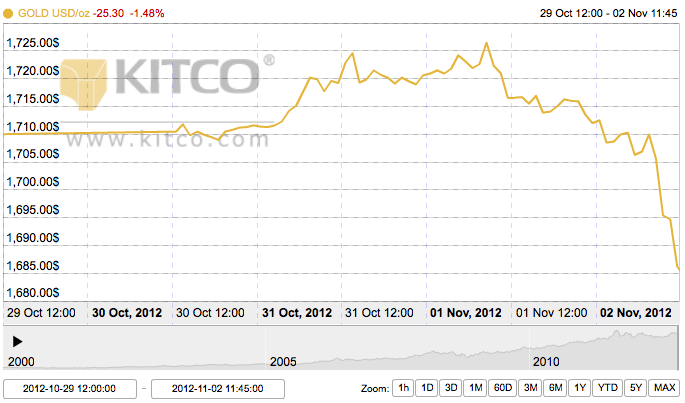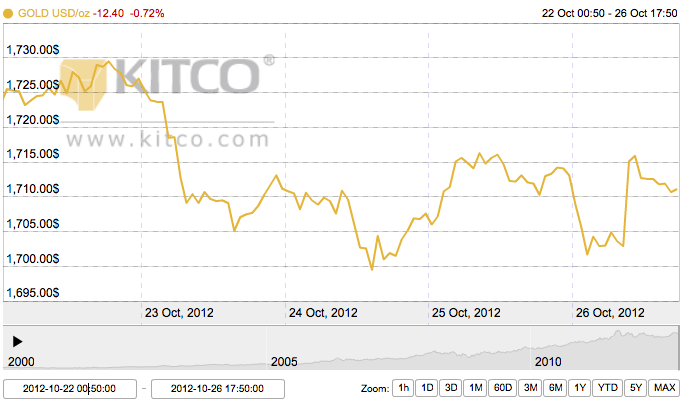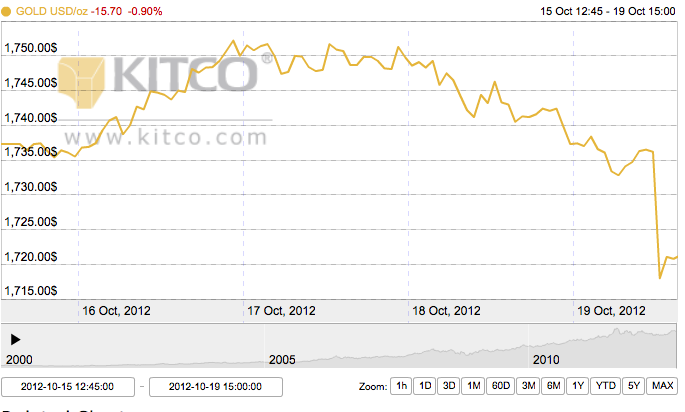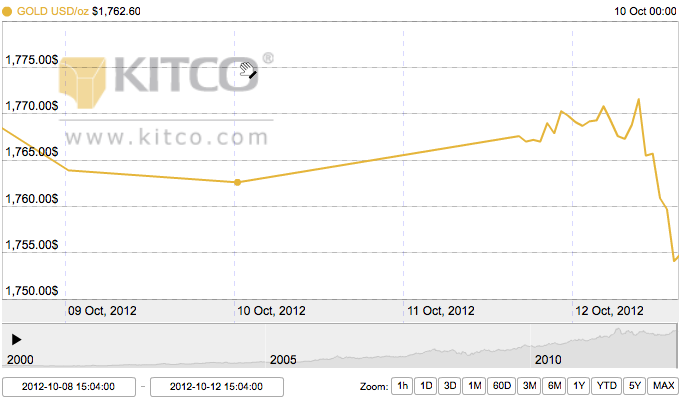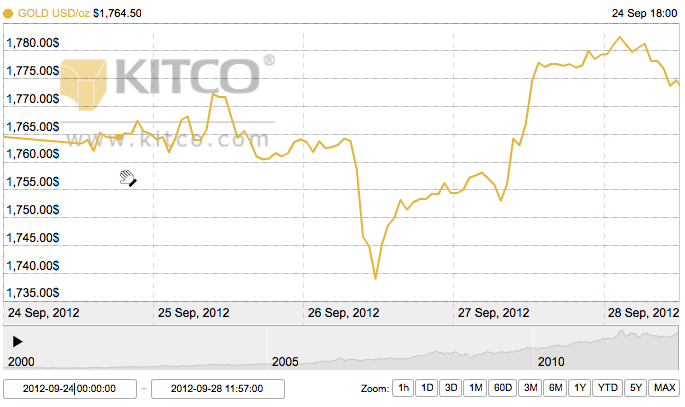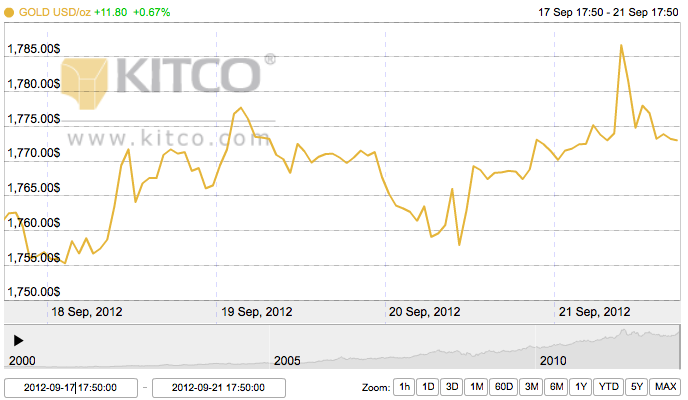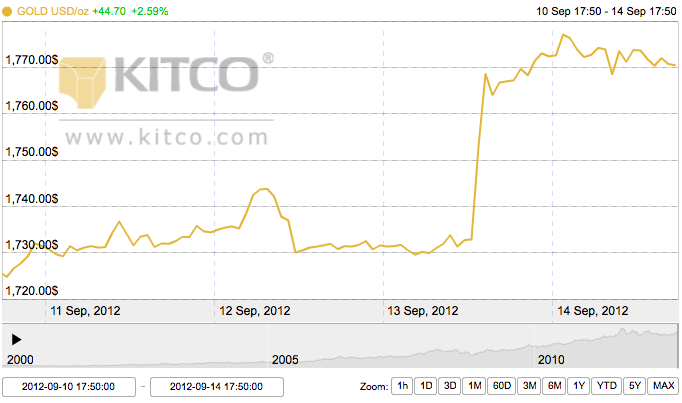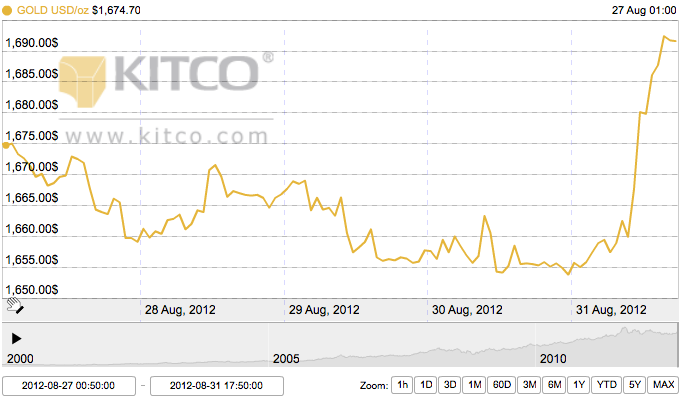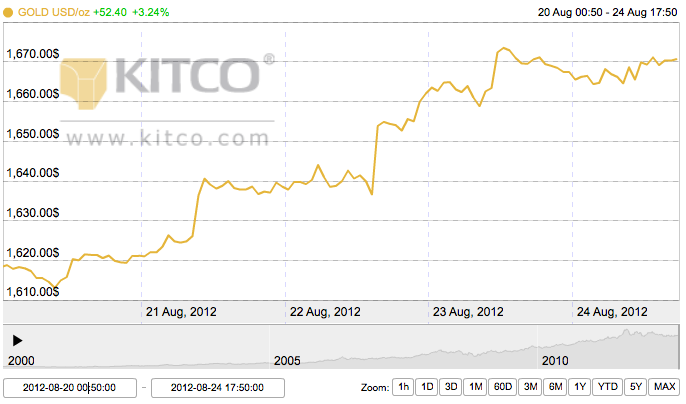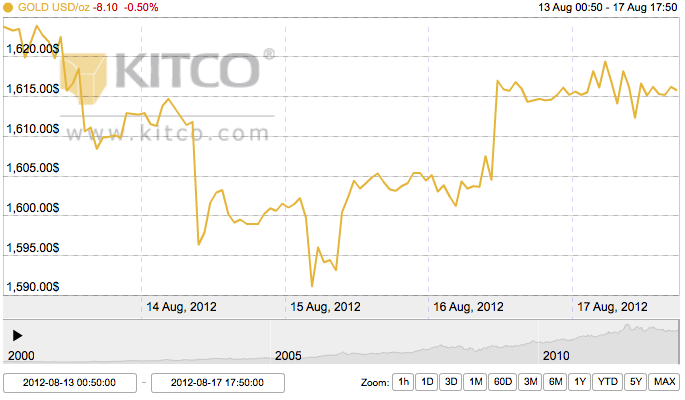Monday Open: $1,710.50
Weekly High: $1,726.50
Weekly Low: $1,686.20
Friday Close: $1,686.20
Gold traded very lightly this week, mostly due to the closure of the New York Stock Exchange on Monday and Tuesday in light of Superstorm Sandy. Some U.S. economic reports released later in the week accounted for the sustained dip below $1,700 that closed the market on Friday.
Hurricane Sandy ravaged the East Coast, causing the first shutdown of U.S. stock markets due to weather in 27 years. No trading occurred Monday and Tuesday as energies were focused on mitigating the effects of the storm, but the Exchange opened smoothly again on Wednesday morning.
This week, economic reports from the U.S. on Friday and from China on Thursday were the causes of anticipation amongst gold stock traders. Wednesday was mostly a bargain hunting day as some joined the market after the dip, but it was still quiet after the recovery of the storm. Positive talks of Greece emerging from the eurozone also caused slight upward movement.
Other national banks have indicated economic stimulus this week, including the Bank of Japan, which continued its asset-buying trend and increased their stores by the equivalent of $137 billion. China’s economic data released on Thursday revealed better than expected growth in manufacturing, which translates into positive news for the precious metals sector, causing slightly higher trading Thursday.
The dip in the week occurred on Friday. U.S. economic reports released on Friday morning revealed unsettling news for gold, causing a drop of $40, the largest loss in four months, to nosedive below $1,700. Payroll data showed numbers higher than expected for October, translating into less pressure on the Federal Reserve to continue easing monetary policy. In October, employers in America added 171,000 jobs and factories expanded by 4.8%, both higher than forecasts predicted. The dollar also rose the most since July 20th, creating less incentive for investment in the safe haven of gold.
Also on the horizon is the U.S. presidential election on November 6th, which could change the course of gold depending on the elected President’s policies. Based on a survey by Bloomberg, gold is still bullish. 18 of 27 analysts expect to see gold rise next week, four were neutral and five were bearish.
